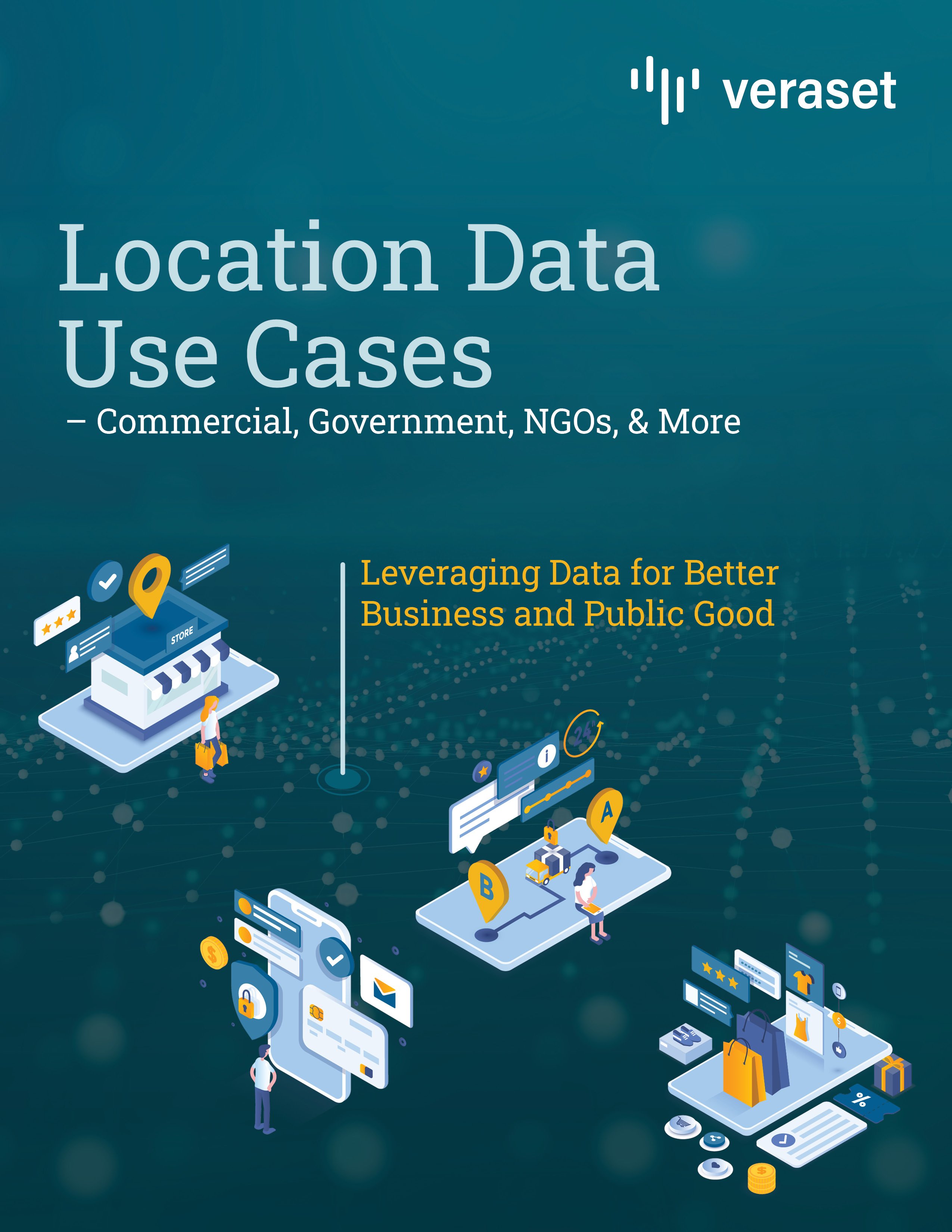The advent of “big data” – the ability to quickly and efficiently collect, process, and analyze vast amounts of data for meaningful insights – has opened up opportunities for more timely and thorough decision-making in various business fields. But big data use case examples are expanding beyond the corporate world and into areas you maybe wouldn’t expect.
This ebook will give you an introduction to how different industries and types of organizations are using data science to make better operating decisions, faster. In particular, it will focus on location data use cases: the role of geospatial information such as weather, foot traffic, property specifications, population demographics, and transportation system layouts in informing decisions concerning real estate, asset trading, insurance policies, disaster relief, and more.
Main takeaways in Location Data Use Case Examples – Commercial, Government, NGOs, & More:
-
Big data is being used in a growing number of business fields
-
Governments and other non-commercial organizations are making use of big data too
-
Geospatial data, and other forms of alternative data, are becoming increasingly important
-
Data brokers, like Veraset, are cost-effective sources of mass quantities of raw data

Download our free ebook and learn how to supercharge your organization’s operations with big data!
Download eBook
If you want to take a deeper dive and see what’s inside first:
Chapter 1: Site Selection & Competitive Intelligence
Typical Industries: Real Estate, Retail, Competitive Analysis
Big data has become an important tool for real estate developers in deciding what to build and where, as well as for businesses to select where to set up their storefronts. It’s also information that businesses can use to create an optimized site selection strategy that accounts for what competitors in the area are doing.
Chapter 2: Visit Attribution & Consumer Insights
Typical Industries: Data-Driven Marketing, AdTech
Certain kinds of data can help a business better understand who their primary customers are and where they come from, which can help them create more accurately-targeted marketing campaigns. Geospatial data can even help them measure the effectiveness of these campaigns by tracking things like how many people were exposed to their ads, visited one of their stores, and/or made a purchase.
Chapter 3: Trade Area Analysis (TAA)
Typical Industries: Urban Planning, Government Planning
While trade area analysis is typically used by businesses to assess local commercial opportunities, it can also be used by governments and urban planning consultants. Having accurate data on property, streets, mobility, and demographics allows them to build cities that are accommodating, accessible, safe, and civically engaged.
Chapter 4: Investment Research
Typical Industries: Financial, Banking
Data has always been critical to those who trade in financial assets, as well as those who provide financial services and advice. But they are now learning how to use geospatial information (and other kinds of alternative data) to anticipate market trends and events before they happen.
Chapter 5: Risk Assessment
Typical Industries: Insurance
Insurers need to determine how liable a person or place is to an incident or accident, in order to provide adequate coverage at a competitive price. Geospatial data – such as where a person or place is located, how busy the area gets, and even what the weather is like there – is giving insurance firms new perspectives with which to conduct more accurate risk assessments.
Chapter 6: Network Planning
Typical Industries: Telecommunications
Telecommunications involves connecting people over distances great and small, so geospatial data is essential to planning networks effectively. Providers can use data to determine where to install their infrastructure and set prices, and enterprise clients can use data to decide where to deploy hotspots and when to conserve bandwidth.
Chapter 7: Mapping
Typical Industries: Transportation, Logistics, City Planning, GIS
It should come as little surprise that geospatial data is a fundamental component of creating maps and GIS software. Having accurate representations of where people, places and things are on the earth is vital to planning how to develop land and how to efficiently navigate between locations.
Chapter 8: Research & Data for Public Good
Typical Industries: Academic, NGO, Non-Profits, Social Impact
Organizations other than businesses and governments are learning how to unlock the power of data as well. Scholars, activists, and volunteers are using big data to research solutions to issues from local to global scales.
